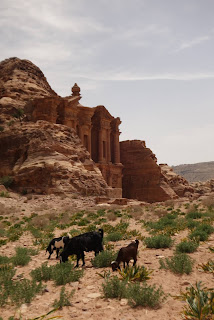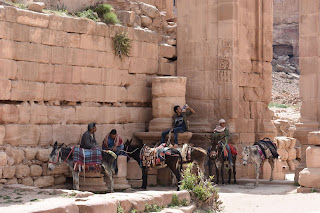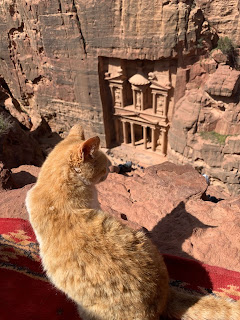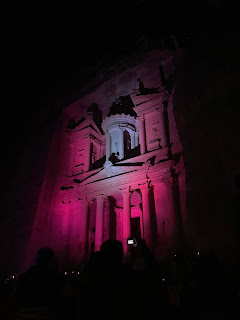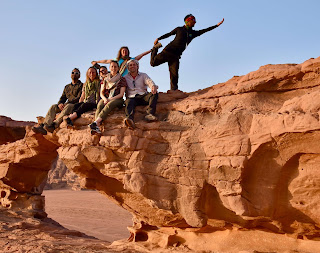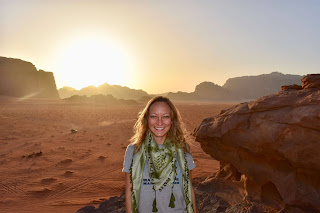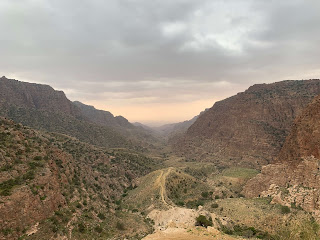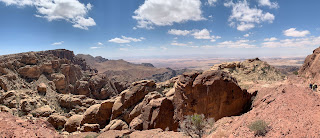Welcome to Cambodia
A country of bones, oceans of blood. Welcome to Cambodia. I learned a lot yesterday. We went with a local guide to a Khmer Rouge prison, one of the largest, and learned about Cambodia's political history of the 20th century. They were under French colonial rule until 1953, and then under democratic monarchy until 1970 when the government was overthrown in a coup with help from the CIA, because the king was starting to get cozy with China. The Khmer Rouge, or literally "Red Cambodia," were communist revolutionaries supported by China and led by a Khmer leader who changed his name to "Pol Pot," short for "political potential." Pol Pot had spent years studying world dictators and their ideologies and methods, determined to develop the most "perfect" system. China convinced the deposed king to support Pol Pot and his revolutionaries with promises to restore him to the throne, which of course never happened.
The Perfect System
Pol Pot's "perfect" system reflected the communist ideals of a class-less, agrarian-based society. When the Khmer Rouge took control of the country in 1975 after years of bloody civil war, the first thing they did was to evacuate the cities - they moved all people into the countryside to become laborers and farmers. Phnom Penh, a city of 2.5 million, was reduced to 72 people. They also set out on a brutal campaign to "cleanse" the country of the "enemy" - all educated people, doctors, professionals, light-skinned Cambodians, foreigners, Viet Cong, KGB "spies," and on and on. In typical megalomania fashion, Pol Pot was extremely paranoid. Schools, temples, and hospitals were turned into prisons for these political prisoners, highlighting the regime's priorities.
All Were Victims
We visited S-21, a former school, and one of the largest of the hundreds of prisons created. The prisoners were held, interrogated, and tortured before being taken to the killing fields. Of all the prisoners in all the prisons (20,000 from this one alone), only 11 people survived the 3 years, 8 months, and 20 days of the Khmer Rouge's regime. The guide repeated that number often, like an indelible memory pressed into the hearts of the Cambodian people.
 |
| S-21 Rules |
 |
| Memorial on the former prison grounds |
In these 3 years, 8 months, and 20 days, between 1.7 and 3 million Cambodian people were brutally murdered. 25% of the population. Today Cambodia has very young demographics - 50% of the country is under 20 years old, and only 10% is over 50. There are very few older people around. Our guide said chillingly - "any older people in our country are either victims or perpetrators, although all were victims." Of the prison guards and those who worked in the killing fields, about 90% were between the ages of 12 and 20. Children asked to torture and kill or be killed themselves.
 |
| Three of the Eleven Total Survivors |
 |
| S-21 |
There Were No Survivors
We visited one of the killing fields located about 17 km outside of the capital, one of I believe a staggering 388 that were used between 1975 and 1979. Most prisoners were only held long enough to beat and torture out a confession, then transferred to the killing fields. The Killing Fields is the name for the mass graves located in fields where people were executed and their bodies piled in pits.
Most prisoners arrived naked so their prison uniforms could be reused. They were killed one by one. Not with bullets, but by bludgeoning. Three guards worked at the top of the pits, smashing the skulls of the blindfolded and bound prisoners. They were then tossed into the pit where two more guards waited and cut their throats for good measure. Often when finished with a night of "work" - 100 people per night, growing to 300 a night by 1979 - the guards would pour acid chemicals on the bodies to help with the smell, and just to be extra sure there were no survivors.
 |
| The Killing Fields |
Were children spared? Mothers? Elderly? No. In the paranoid mind of Pol Pot, their blood was tainted. If their parents were VC spies, even infants could not be spared. And for the record, almost none were actually VC spies.
The Children's Tree
In the middle of the killing fields was a tree. The children's tree. Where babies and small children were taken by their ankles and bashed against the tree while their mothers watched. The guards, the child guards, would then rape the mothers who had just watched their children smashed to death, and then kill them too. The naked mothers and children were found together in a mass grave. These accounts came from the guards themselves, since there were no survivors.
 |
| The Children's Tree |
 |
| The Mass Grave Next to the Tree |
Personal Reflections
It was a hard day. I wasn't sure how I would react or be able to handle this going in, and it wasn't what I expected. When we crossed the threshold of the site, I got very agitated, like I wanted to crawl out of my own skin. I kept watching the ants underfoot and it was hot and I was sticky and why did the guide stop here for so long?! I wanted to scream and scratch my skin, it was a powerful and horrible feeling. It took me a few minutes actually until it dawned on me - was I reacting to this place? Yes, I'm hot and bothered but I've been hot and bothered for the last 1.5 months straight and haven't felt anything like this. It was as if the anguish of the victims, the terror and pain they felt in their last moments was still screaming from the dirt and dust. Country of bones. Oceans of blood.
 |
| Memorial Building at the Killing Fields |
 |
| Skulls Recovered from the Mass Graves |
What We Have Done
The Viet Cong invaded in 1979 after Pol Pot tried unsuccessfully to invade Vietnam, and ended the Khmer Rouge's reign of terror. How do we keep learning this lesson and repeating the absolutely unthinkable, most inhuman behavior we're capable of as a species? Bosnia. Rwanda. Burma. In philosophical discussions, I used to believe that the basic nature of humans is good, that at our heart we are good and are of goodness. I don't know what to believe anymore. Something more complicated and darker. We're capable of such good and such horror, and none are exempt.
That was hard to write, but it's important to me that I remember. That I can share and bear witness to these atrocities, even in the 3rd, 4th hand and continents and years away. As a collective whole of humanity, we must not forget what we have done and what we are capable of.














